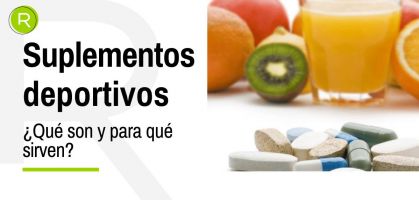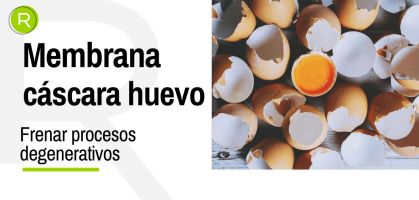Everyone suffers from gas to one degree or another, although some people are more susceptible than others. A large number of people report gastrointestinal discomfort after eating, which can be very annoying, such as constant belching, bloated belly, "rumbling in the gut", abdominal pain and excessive wind. These discomforts are related to the presence of gas in the gastrointestinal tract and are called flatulence.
They become so uncomfortable that they can even affect our daily lives.

Consequences of gas
Flatulence is a clinical picture with three main symptoms: excessive belching, meteorism and expulsion of excess gas rectally. It is usually frequent in people with functional digestive disorders, although depending on the age and the form in which it appears, it can be a symptom of some digestive disease, among which constipation, whether occasional or chronic, lactose intolerance, gastritis, gastric ulcer, intestinal subocclusion, irritable bowel syndrome, ulcerative colitis and Crohn's disease, the presence of intestinal parasites or others stand out.
You may be interested in: How to lose weight fast: The 25 keys to achieve it healthily.
Where does gas come from?
The gas in the intestine (nitrogen, oxygen, hydrogen, carbon dioxide and methane) can come from different sources: from the air that is ingested when swallowing or swallowing, from that which is produced naturally by fermentations in the intestinal microbiota and from diffusion from the blood.
If the discomfort appears in the gastric area (stomach), generally the origin of the excess gas in the stomach is air swallowed (aerophagia) while eating, which is usually associated with eating in a hurry or in a hurry (sometimes related to situations of stress and anxiety during meals).
Most of this gas will be belched out and only a small amount will pass into the intestine. It is normal during food intake, especially liquids, milkshakes and carbonated beverages, to burp gently, but it is no longer normal when burping is continuous and prolonged beyond the time of ingestion. Aerophagia with excessive belching occurs mainly in patients with dyspepsia, so this should be treated to improve the picture.
When the discomfort is mostly in the intestine, it is called meteorism, which is due to an excess of gas in the intestine that causes intestinal spasms, an increase in the sensitivity of the intestinal walls and abdominal distension.
The main cause is a high production of gas from the fermentation of some compounds in the food we eat by our intestinal flora (microbiota) and a small part of the gas that may diffuse from the blood into the intestine.
And the causes of meteorism are...
The causes of meteorism are indigestion, a sudden change in diet with increased fiber content, excess consumption of foods rich in non-absorbable carbohydrates, the ingestion of flatulent foods (gas-producing and odor-forming foods), as well as the use of antibiotics that unbalance the intestinal flora or other drugs that can produce gas.
Sometimes, the presence of pain due to meteorism is not caused by an increase in the amount of gas in the intestine, but by a certain difficulty in the advancement of air through the intestine or by a greater sensitivity to intestinal distension with a greater painful response.
It would be an exaggerated perception of intestinal gas that produces painful reflexes to small increases in volume, which explains why dietary treatment sometimes does not give the expected results. In this sense, flatulence and emotional disorders (anxiety, depression, phobias, and obsessive-compulsive disorder) have been frequently found to coexist, which implies a multidisciplinary therapeutic treatment.
How is intestinal gas eliminated?
Intestinal gas is eliminated from the digestive tract by several mechanisms: diffusion into the blood, metabolism of bacteria in the colon and elimination through the anus (sucking or farting).
The average number of rectal expulsions of gas is 14 per day and the expulsion of more than 26 per day is considered abnormal.
When the meteorism or flatulence is due to food, the mainstay of treatment is the regulation of flatulent foods (which produce gas) in the diet, as well as the control of certain behaviors of daily life.
Some drugs may help to reduce discomfort, but their long-term beneficial role on symptoms is currently limited.
General care and lifestyle that will help reduce discomfort and improve quality of life:
- Do not smoke.
- Avoid chewing gum and candies, especially sugarless ones, as they may increase symptoms.
- Maintain proper oral hygiene.
- Avoid swallowing air ("dry" swallows) in situations of nervousness.
- It is important to drink and eat slowly, chewing well.
- Avoid excessive talking during meals.
- Avoid carbonated or carbonated drinks.
- Do not drink while lying down or lie down immediately after eating.
- Avoid constipation and do physical exercise (walking, strolling...).
- Moderate fat and fiber in the diet.
- To rule out lactose intolerance. This is produced by a lactase deficiency. In this situation, unabsorbed lactose passes into the colon, where bacteria break it down to form acids, water and gas, which are responsible for the symptoms: flatulence, abdominal pain, bowel movements, diarrhea, etc.
- Lactase deficiency can be permanent or transitory (the latter caused by inflammatory or infectious diseases). It can also be partial or total. Once diagnosed, the diet must be individualized.
- Rule out fructose-sorbitol intolerance, which can be permanent (most common) or transient (usually caused by inflammatory or infectious diseases of the small intestine). It can also be partial or total. Therefore the diet should also be individualized.
- To follow a diet low in FODMAP's, acronym of: "Fermentable Oligosaccharides, Disaccharides, Monosaccharides and Polyols".
The low FODMAP diet consists of a diet in which carbohydrates that may not be 100% absorbed in the intestine (fermentable oligosaccharides, disaccharides and monosaccharides and polyols) are controlled. When this occurs, they ferment at the intestinal level, which causes gas and the symptoms described above.
The low FODMAP diet limits the consumption of...
Fructans or Fructo-oligosaccharides contained in foods such as wheat, rye and barley, chicory, as well as in agave, some vegetables(asparagus, artichokes, garlic, onion and to a lesser extent cabbage, cauliflower, broccoli or beets) and fruits. Fructans can partly aggravate abdominal distension and meteorism, but at the same time they have a very beneficial effect on the organism as they have probiotic, immunomodulatory and antioxidant properties, preventing hypercholesterolemia, diabetes, osteroporosis or even colon cancer by reducing the risk of developing polyps, among others.
Galactans or Galacto-oligosaccharides contained mainly in legumes.
Polyols contained in stone fruits, mushrooms and mushrooms, as well as in some sweeteners. Sorbitol (additive E-420) is a sugar-alcohol or polyol that occurs naturally in certain fruits and is used as a sweetener, being important in commercial products such as juices, chewing gum and sugar-free candies, medicines (especially syrups), pastries, diet products for diabetics and coeliacs, as well as in slimming diets.
Excess Fructose (foods that have a higher proportion of fructose than glucose, in which case the excess fructose is not well absorbed) honey, certain vegetables and fruits and some wines and liquors. Excess sugars that are not assimilated pass into the colon, where bacteria break them down to form acids, gas and water, which produce symptoms (gas, abdominal pain/distension, diarrhea, etc.).
Lactose is the main sugar in milk and its derivatives (yogurts, some cheeses, cream and creamy ice creams).
In short, it would be a matter of avoiding foods rich in FODMAPs:
- Fruits: apple, apricot, cherries, plum, plum, peach, watermelon, mango, nectarine, pear, persimmon, blackberry, nectarine or mango and avocado.
- Vegetables: artichoke, beet, asparagus, cabbage, Brussels sprouts, cauliflower, broccoli, dandelion leaf, fennel, garlic, onion, spring onion, leek, lettuce, mushrooms and mushrooms.
- Legumes in general: peas, lentils, broad beans, white beans and chickpeas.
- Cereals: rye, wheat and barley.
- Artificial sweeteners containing sorbitol (E420), mannitol (E421), isomalt (E953), maltitol (E965) and xylitol (E967).
- Others: dairy products (avoid milk and assess individual tolerance of yogurts and cheeses), honey, syrup, soy salsa.
- When shopping, it is very important to carefully observe the labels of packaged foods and make sure that they do not contain any of the listed ingredients.
List of foods that can be taken
- Cereals and pseudo cereals: rice, corn, oats, sorghum, millet, quinoa, buckwheat.
- Vegetables: chard, spinach, lettuce, zucchini, squash, pumpkin, eggplant, celery, carrot, parsnip, turnip, green bean not pomegranate, lettuce, tomato, lamb's lettuce, arugula, turnip, cucumber, endive, mint, basil, bell pepper.
- Tubers: potato, sweet potato, cassava, tapioca.
- Fruits: orange, tangerine, kiwi, ripe banana, strawberries, loquats, papaya, pineapple, grape, grapefruit, lemon, melon, pomegranate.
- Rice, almond, oat, oat, quinoa vegetable drinks (preferably enriched in calcium).
- Lactose-free dairy products: milk, yogurt, cheese. Butter.
- Meats: chicken, turkey, rabbit, beef, pork, lamb, etc., fat-free. Turkey or chicken ham or cold cuts; cured ham or cured pork loin.
- Fish and seafood.
- Eggs.
- Nuts: almonds, walnuts, hazelnuts, pine nuts.
- Dark chocolate, coffee, tea.
- Olives and extra virgin olive oil.
Recommendations for the diet
Start the treatment of flatulence with a low FODMAP's diet for at least 2 weeks. If symptoms improve, prolong the diet up to 8 weeks.
After this time the amount of oligosaccharides, fructose, polyols and lactose can be gradually reintroduced, depending on the level of tolerance, and distributing the foods containing these substances in small intakes throughout the day, accompanying them with other FODMAP-free foods to improve their tolerance.
One last piece of advice
The important thing is to look for individual tolerance, for which it is advisable to keep a food diary and verify which of the foods ingested are the cause of flatulence. Once these are determined, it will be advisable not to ingest them or to take them sporadically and in small quantities.
Read more news about: Nutrition















